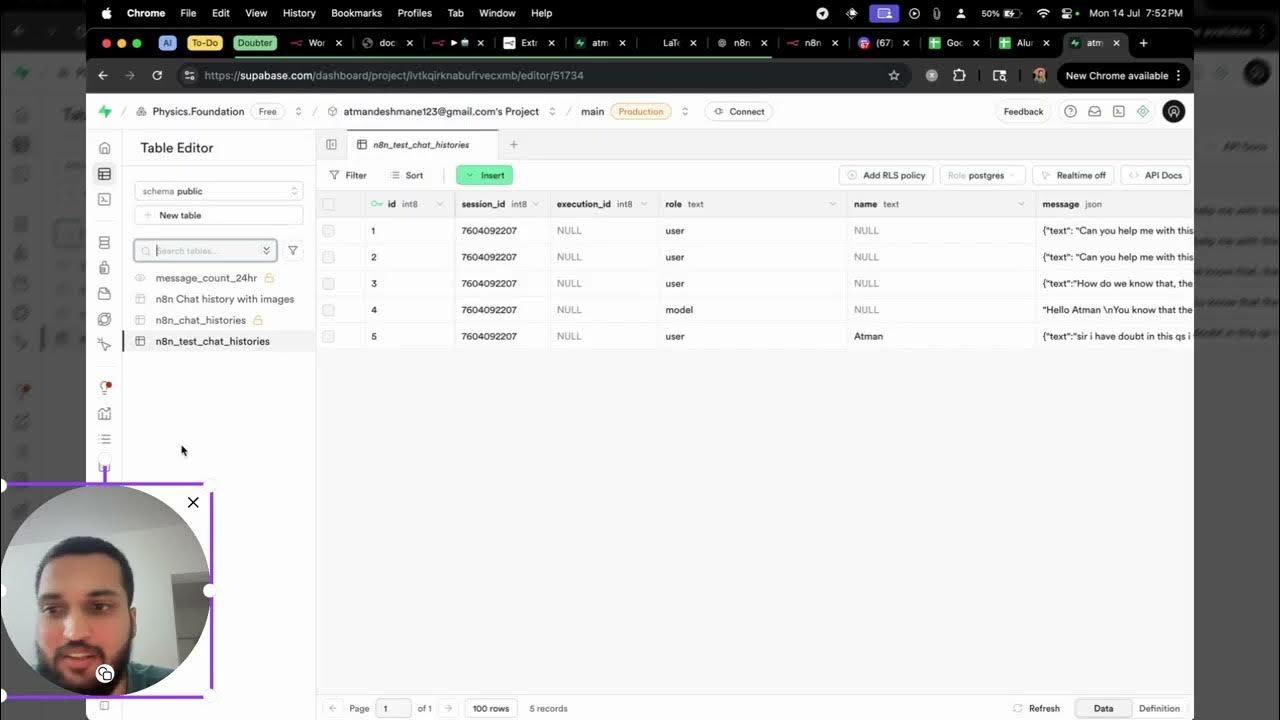How to run your own local Telegram Bot API server in Python [PTB v13]
Summary
TLDRThis tutorial video guides viewers on setting up a local Bot API server to bypass Telegram's file size limitations. It demonstrates using an open-source repository and server build instructions to install the server on Linux with g++. The process involves obtaining an API ID and hash, ensuring the bot is logged out from Telegram's servers, and configuring the local server with the correct environment variables. The video concludes with a successful demonstration of the bot running through the local API server, now capable of handling files larger than 50MB.
Takeaways
- 🤖 The video is a tutorial on hosting a local Bot API server to bypass the file size limits imposed by Telegram's API.
- 🔗 The server can be set up using an open-source repository provided by Telegram.
- 📚 Follow the server build instructions generator for step-by-step installation on your machine.
- 💻 The video demonstrates the process using Linux with WSL (Windows Subsystem for Linux) and g++ compiler.
- ⏱️ The installation process may take up to 10 minutes depending on network speed and computer performance.
- 🔑 To run the server, you need an 'api-id' and 'api-hash', which can be obtained from a specific Telegram link after entering your phone number.
- 🚫 Ensure that the 'api-id' and 'api-hash' are kept secure and not shared, as they can be used to delete your account.
- 📋 Before running the local server, the bot must be logged out from the actual Telegram Bot API servers using the Bot.logout() method.
- 🛠️ After building, navigate to the 'bin' directory to run the API server with the necessary environment variables.
- 🔄 The server can be started with a command, adjusting for any capitalization or syntax errors as needed.
- 🔄 Update your Python Telegram Bot (PTB) code to use the local server by commenting out the default line and adding the server address.
- 📡 The local server runs on 'http://0.0.0.0' by default and uses port 8081, allowing for the handling of files larger than 50MB.
Q & A
What is the main purpose of hosting your own local Bot API server as described in the video?
-The main purpose is to bypass the 50 MB upload limit and the 20 MB download limit for bots, allowing for the upload and download of larger files.
Where can one find the open source repository mentioned in the video to host their own server?
-The open source repository can be found on Telegram's provided link, which is mentioned in the video.
What are the advantages of having your own local API server according to the video?
-The advantages include the ability to handle larger files and potentially improved control and customization over your bot's API server.
What is the 'server build instructions generator' mentioned in the video?
-It is an interactive page that helps users install the server on their machine by providing step-by-step instructions based on the user's operating system and preferences.
Why does the video recommend using g++ over clang for compiling the server?
-The video mentions that g++ is chosen because the file size is apparently less than that of clang.
How long does the server installation process take according to the video?
-The installation process can take up to 10 minutes, depending on the user's network speed and computer performance.
What are 'api-id' and 'api-hash', and how does one obtain them?
-The 'api-id' and 'api-hash' are credentials required to run the Bot API server. They can be obtained by visiting a specific link provided in the video, entering your phone number, and receiving these credentials.
Why is it important to ensure that the bot has logged out from the actual Telegram Bot API servers before running the local server?
-It is important to avoid conflicts and ensure that the bot operates exclusively through the local API server instance once it is set up.
What command is used to run the local Bot API server after building it, according to the video?
-The video does not provide the exact command, but it mentions that the server can be run by entering a command in the 'telegram-bot-api/bin' directory with the 'api-id' set as an environment variable.
What version of the Python Telegram Bot (PTB) library is required to work with the local API server?
-The video states that version 13.1 or higher is required, with the presenter running version 13.7.
How can one verify that the bot is running through the local API server instead of Telegram's API server?
-The video suggests using a CommandHandler to check the base_url and process id, and by testing the ability to send files larger than 50MB, which is not possible through Telegram's API server.
Outlines

This section is available to paid users only. Please upgrade to access this part.
Upgrade NowMindmap

This section is available to paid users only. Please upgrade to access this part.
Upgrade NowKeywords

This section is available to paid users only. Please upgrade to access this part.
Upgrade NowHighlights

This section is available to paid users only. Please upgrade to access this part.
Upgrade NowTranscripts

This section is available to paid users only. Please upgrade to access this part.
Upgrade NowBrowse More Related Video

Telegram Doubt Bot Steps

2 | How to Install a Local Server for PHP | 2023 | Learn PHP Full Course for Beginners

Khoá học lập trình PHP&MYSQL - Bài 48: Upload File PHP

Evil AI: Creating an AI-Powered Telegram Bot with Python to Automate Tasks

HOW TO MAKE MONEY SNIPING MEMECOINS ON SOLANA [FULL GUIDE]

Belajar Web Dasar [HTML] - Episode 02 - Instalasi dan Persiapan
5.0 / 5 (0 votes)